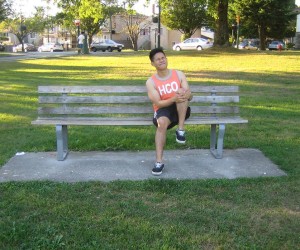Posterior cruciate ligament is vital for stabilizing the knee as well as preventing it from bending back in the wrong way.
What are the symptoms?
The symptoms of a posterior cruciate ligament typically include pain at the time of injury which can also be felt in the calf area over time. There is swelling but usually minimal. The individual will also complain of joint instability that might be linked with the feeling that the knee is giving away.
Remember that pain is generated once the posterior cruciate ligament is stressed out by bending the knee in the wrong manner. When the reverse Lachman’s test or posterior drawer test is performed, there is a positive result in both tests.
Management of posterior cruciate ligament sprain

Once the knee has been injured, you have to utilize the PRICE method (protect, rest, ice, compression, elevation). The application of ice and compression must be done as soon as possible after the injury for 10-15 minutes every hour to help minimize the pain and swelling over the acute stage. To learn to recognize and manage knee injuries, register for first aid training here.
There are cold therapy wraps that are specifically designed for the knee along with compression. These are usually used 24-48 hours or longer depending on the severity of the injury. Make sure that the ice pack used is not directly applied on the skin since it might cause ice burns. Always use a knee support to protect the joint at all times.
In case the knee joint is sore and inflamed, it is unlikely that a full examination will be possible. The moment the swelling and pain has subsided, a sports injury professional can examine and diagnose the injury. An MRI scan or X-ray will be used to assess the extent of the damage. Once the injury has been properly diagnosed, the treatment can either involve conservative measures or surgery.
Conservative treatment
Conservative treatment is indicated for cases of posterior cruciate ligament injuries. It typically includes application of ice and heat, electrotherapy, manual therapy and even exercises.
The doctor will provide a specific rehabilitative exercise program that includes hamstring and quadriceps strengthening, balance training utilizing wobble boards and gait re-education. A knee brace or support can be utilized during the mild phase. Knee braces that are built with hinges provide the ideal support for knee ligament injuries.
Surgical treatment
Some cases of posterior cruciate ligament injuries require surgery. Nevertheless, in serious cases, especially those in which other structures inside the knee joint are damaged; surgery might be the recommended solution. Surgery is also indicated if conservative treatment has not aided in the stability of the knee sufficiently over a period of time.
Generally, those who sustained a PCL injury typically have good recovery rates and most are able to resume sports at the same level before the injury. Nevertheless, full recovery from cruciate ligament injuries usually depends on the ability of the individual to stick with the rehabilitation program.
